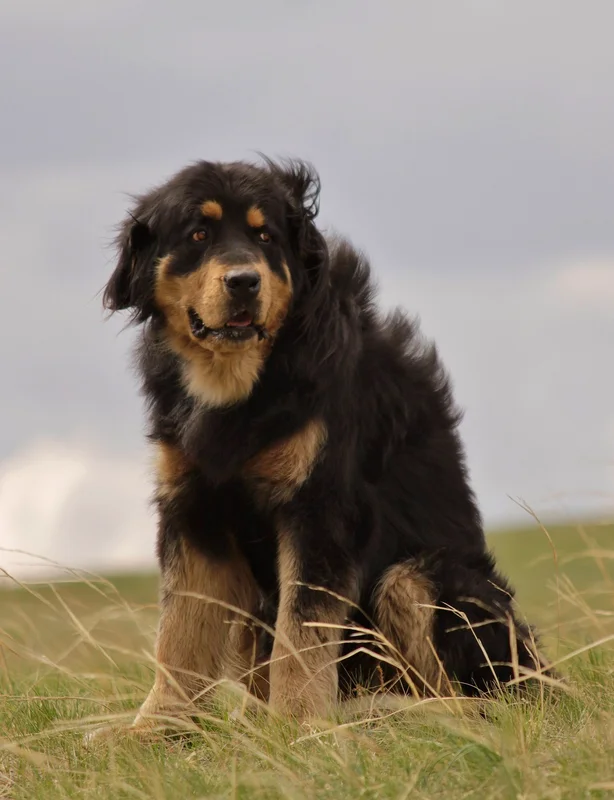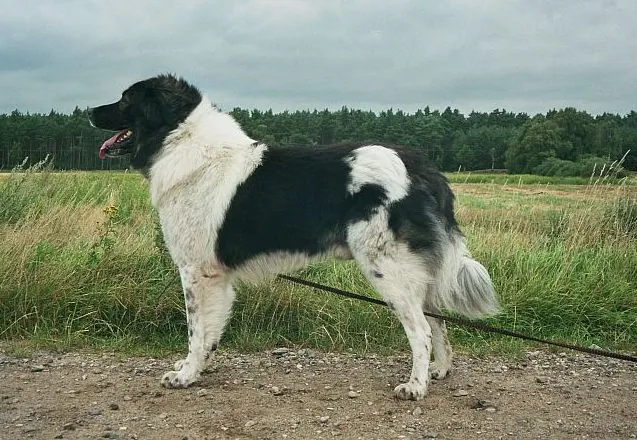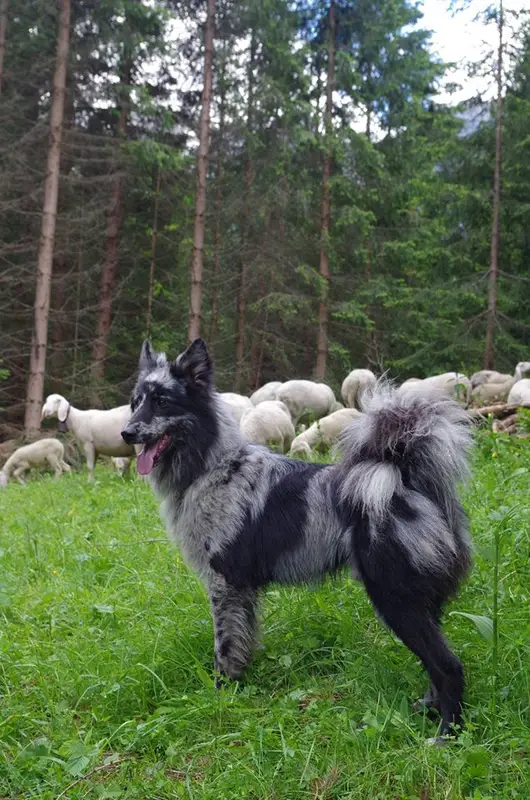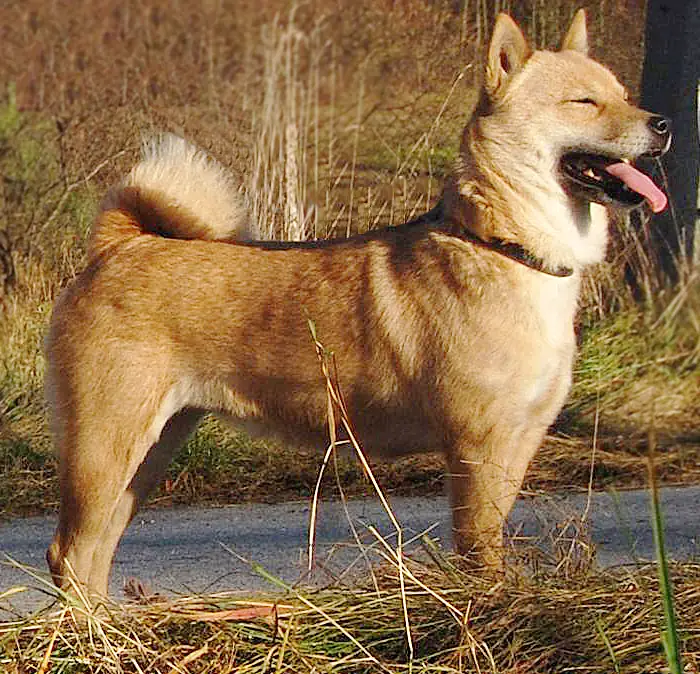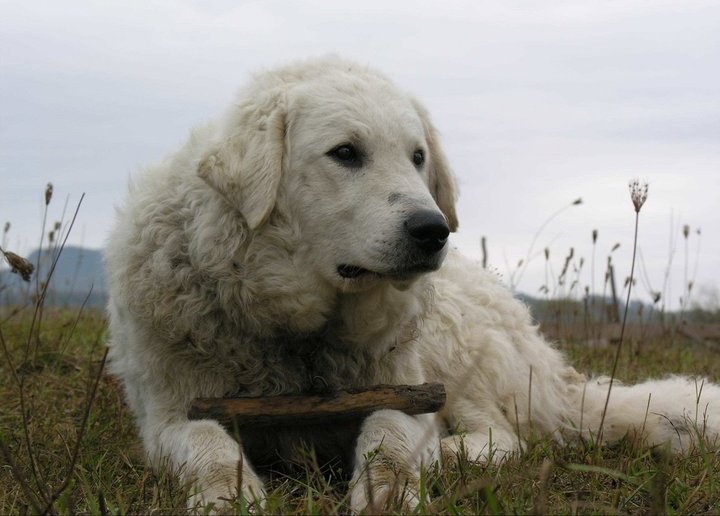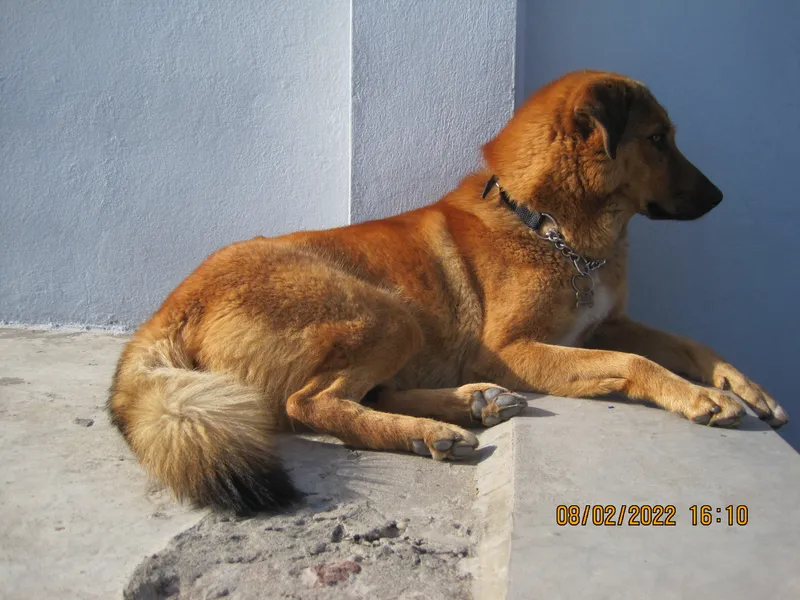Bucovina Shepherd Dog
The Bucovina Shepherd Dog is a large, loyal breed known for its protective nature and gentle demeanor with children. Originating from Romania, they excel in guarding livestock and make excellent family pets.
Overview
🐕Breed Overview
✨Key Traits
💡What Makes Bucovina Shepherd Dog Special
Bucovina Shepherd Dogs are characterized by their impressive physical strength and endurance, which are essential for their historical role as livestock guardians. They possess a strong work ethic and a natural instinct to protect, making them reliable guardians of both livestock and property.
Their affectionate nature towards family members, especially children, sets them apart from other breeds. Additionally, their adaptability allows them to transition from working dogs in rural settings to loving companions in urban environments, provided they receive adequate exercise and mental stimulation.
Their powerful bark and imposing presence serve as effective deterrents against intruders, making them highly valued as watchdogs.
The Bucovina Shepherd Dog, also known as Caine Ciobanesc de Bucovina, is a majestic and powerful breed that has served as a loyal companion to Romanian shepherds for centuries. Originating from the Carpathian Mountains, this large rustic dog was bred for herding and guarding livestock against predators. With a height ranging from 25 to 31 inches and a weight between 40 to 90 pounds, the Bucovina Shepherd is known for its impressive physical presence and robust build.
Their thick, dark gray coat, adorned with well-defined patches of sand, charcoal, or brindled colors, provides protection against harsh weather conditions, making them well-suited for outdoor life. The temperament of the Bucovina Shepherd Dog is characterized by a balanced and calm demeanor, making them excellent family pets. They are particularly gentle with children, showcasing their kind nature.
However, their protective instincts make them wary of strangers, which is a trait that has been honed over generations of guarding livestock. Their powerful bark serves as an effective alarm system, alerting owners to any potential threats. In terms of exercise, Bucovina Shepherd Dogs require ample physical activity to keep them healthy and happy.
Daily walks, playtime, and opportunities to run freely in a secure area are essential. They thrive in environments where they can patrol and explore, making them ideal for families with large yards or rural settings. Training a Bucovina Shepherd Dog can be rewarding, as they are intelligent and eager to please.
However, consistent socialization and obedience training are crucial to ensure they develop into well-rounded adults. Their strong work drive means they excel in tasks that challenge their physical and mental abilities. Overall, the Bucovina Shepherd Dog is a remarkable breed that combines strength, loyalty, and a gentle disposition, making them a perfect companion for families and individuals who appreciate their unique qualities and heritage.
🎉Fun Facts
Bucovina Shepherd Dogs are known for their impressive guarding abilities, often patrolling their territory at night.
They have a powerful bark that can deter intruders and alert their owners to potential threats.
This breed is known for its strong bond with family members, particularly children, making them excellent family pets.
Breed Characteristics
Family & Friends
Good Behavior
Get Up & Go
Household Harmony
Temperament & Personality
✨Key Traits
🐕Core Temperament
The Bucovina Shepherd Dog exhibits a balanced temperament, combining loyalty, courage, and gentleness. They are protective of their families and territory, making them excellent watchdogs.
While they are generally calm and composed, they can be assertive when necessary, particularly in the presence of perceived threats. Their independent nature means they may not always seek constant attention, but they thrive on companionship and enjoy being part of family activities.
Early socialization is crucial to ensure they develop a well-rounded personality, as they can be wary of strangers. Overall, their temperament makes them suitable for families, especially those with children.
💫Personality Profile
The Bucovina Shepherd Dog is known for its loyal and protective nature. They are devoted to their families and exhibit a calm demeanor, making them great companions.
While they are gentle with children and other pets, they can be wary of strangers, which makes them excellent watchdogs. Their natural instincts drive them to be vigilant and alert, often barking to signal any perceived threats.
Despite their independent streak, they thrive on companionship and enjoy spending time with their families. Their intelligence and eagerness to please make them trainable, although consistent socialization is essential to ensure they are well-adjusted.
🔊Vocal Tendencies
Bucovina Shepherd Dogs are known for their deep, resonant bark, which they use to alert their owners to potential threats. They tend to bark when they sense unfamiliar people or animals approaching their territory.
While they are not excessive barkers, their vocalizations can be quite loud and commanding, serving as a warning to intruders. Their barking is often accompanied by a strong protective instinct, making them vigilant guardians.
In addition to barking, they may also express themselves through growls or other vocalizations when feeling threatened or protective.
Affection & Social Traits
Energy & Activity
Communication Style
Care Requirements
🏃♂️Exercise Requirements
Daily Exercise
The Bucovina Shepherd Dog requires a significant amount of exercise to maintain its physical and mental health. Ideally, this breed should engage in at least 90 to 120 minutes of exercise daily. Activities can include long walks, running, playing fetch, and engaging in dog sports that challenge their agility and intelligence.
Given their history as livestock guardians, they thrive in environments where they can roam freely and patrol their territory. Puppies should start with shorter play sessions, gradually increasing in duration as they grow, while adult dogs need consistent, vigorous exercise to prevent boredom and destructive behaviors. Regular exercise not only helps manage their weight but also supports their cardiovascular health and overall happiness.
Insufficient exercise can lead to behavioral issues such as barking, digging, or aggression, particularly towards perceived threats.
Preferred Activities
🏠Living & Adaptability
Space Requirements
Bucovina Shepherd Dogs require ample space to thrive. They are best suited for homes with large yards or rural settings where they can roam and patrol.
While they can adapt to suburban environments, they should not be confined to small apartments or homes without outdoor access. Owners in smaller living spaces must ensure they provide sufficient exercise and mental stimulation through regular outings and playtime.
The breed's size and energy level necessitate a secure outdoor area where they can run freely. Lack of adequate space can lead to anxiety, frustration, and destructive behaviors.
Climate Preference
🍲Feeding Guide
Schedule
Food Types
Portion Size
Special Nutritional Needs
Bucovina Shepherd Dogs require a balanced diet rich in protein to support their muscular build and active lifestyle. It's essential to choose high-quality dog food that meets their nutritional needs.
Some dogs may have sensitivities to certain ingredients, so monitoring their reactions to new foods is crucial. Supplements such as omega fatty acids can help maintain a healthy coat and skin.
✨Grooming Requirements
Grooming Overview
The Bucovina Shepherd Dog has a thick, double coat that requires regular grooming to keep it healthy and free of mats. The outer coat is long, straight, and coarse, while the undercoat is dense and soft.
Regular brushing, at least once a week, is necessary to remove loose hair and prevent matting, especially during shedding seasons. Bathing should be done as needed, typically every few months or when the dog becomes particularly dirty.
Nail trimming should be done every 2-4 weeks, and regular dental care is essential to maintain oral health. Ears should be checked regularly for dirt and wax buildup, and cleaned as needed.
Care Schedule
Brush weekly, bathe as needed (every few months), trim nails every 2-4 weeks.
Health Profile
⚕️Health Care
Regular health care is vital for the Bucovina Shepherd Dog's longevity. Routine veterinary check-ups, vaccinations, and preventive treatments can help catch health issues early and ensure the dog remains healthy throughout its life. Owners should also be proactive in monitoring their dog's health, including dental care, weight management, and exercise routines, to maintain optimal health at every life stage.
Health Issues Overview
⏳Average Lifespan
Genetic Factors
Genetics play a significant role in the Bucovina Shepherd Dog's lifespan. Responsible breeding practices that prioritize health and genetic diversity can help reduce the risk of hereditary health issues.
Potential owners should seek reputable breeders who conduct health screenings and provide transparency about the dog's lineage. Understanding the genetic predispositions of the breed can help owners make informed decisions about their dog's care and management.
Living Conditions
The Bucovina Shepherd Dog's lifespan can be influenced by various environmental factors. Dogs that live in spacious, active environments with plenty of opportunities for exercise and social interaction tend to live longer, healthier lives.
Conversely, those confined to small spaces or lacking regular exercise may experience health issues that can shorten their lifespan. A balanced diet, routine veterinary care, and a stimulating environment are crucial for promoting longevity.
🏥Common Health Issues
Hip Dysplasia
Warning Signs
🔬Diagnosis
Veterinarians typically diagnose hip dysplasia through physical examinations and X-rays.
💊Treatment
Treatment options may include weight management, physical therapy, and in severe cases, surgical intervention.
📝Management Tips
Maintain a healthy weight, provide joint supplements, and engage in low-impact exercises to reduce stress on the joints.
Progressive Retinal Atrophy (PRA)
Warning Signs
🔬Diagnosis
Diagnosis is made through veterinary eye examinations and genetic testing.
💊Treatment
Currently, there is no cure for PRA, but supportive care can help manage the dog's quality of life.
📝Management Tips
Regular veterinary check-ups and monitoring for changes in vision are essential.
🛡️Preventive Care
🔬Hip Evaluation
Hip Evaluation assesses the dog's hip joints for dysplasia and other abnormalities, which is crucial for a breed prone to hip issues.
📅 Annually after 2 years of age, or as recommended by a veterinarian.
🔬Eye Examination
Eye Examination checks for hereditary eye conditions such as Progressive Retinal Atrophy, which can affect vision over time.
📅 Every 1-2 years, especially if there is a family history of eye issues.
Training
🧠Intelligence & Trainability
💪Work Drive
This breed has a strong work drive, stemming from its history as a livestock guardian. Bucovina Shepherd Dogs thrive when given tasks to complete, whether it's herding livestock, patrolling property, or engaging in training exercises.
Mental stimulation is just as important as physical exercise for this breed. Activities that challenge their problem-solving abilities, such as obedience training or interactive toys, can help keep them mentally sharp and satisfied.
Without sufficient engagement, they may become bored and exhibit undesirable behaviors.
⚠️Training Considerations
Bucovina Shepherd Dogs can exhibit behavioral challenges, particularly if they are not properly socialized from a young age. Their natural wariness of strangers can lead to protective or aggressive behaviors if they perceive a threat.
To mitigate these challenges, early socialization is crucial; exposing them to various people, environments, and other animals can help them develop a balanced temperament. Consistent training using positive reinforcement methods is essential to establish boundaries and encourage good behavior.
Additionally, providing mental stimulation through puzzle toys and training exercises can help prevent boredom and destructive tendencies.
📝Training Tips
Training a Bucovina Shepherd Dog requires patience and consistency. Start with basic obedience commands, using positive reinforcement techniques such as treats and praise to encourage desired behaviors.
Socialization should begin early, introducing the puppy to different environments, people, and other animals. Incorporating fun activities like agility training or herding exercises can keep them engaged and mentally stimulated.
It's important to establish a strong bond with the dog, as they respond well to owners who are confident and assertive. Regular training sessions should be kept short and enjoyable to maintain their interest and enthusiasm.
History & Heritage
📜Origin Story
The Bucovina Shepherd Dog originated in the picturesque region of Bucovina, located in the northeastern part of Romania. This mountainous area provided the perfect backdrop for the development of a robust and resilient breed, as shepherds relied on these dogs to protect their flocks from predators such as wolves and bears.
The breed's ancestors were likely influenced by various local and imported breeds, resulting in a dog that is both powerful and agile. As the demand for livestock protection grew, so did the reputation of the Bucovina Shepherd as a dependable guardian.
Over the years, the breed has adapted to changing lifestyles, transitioning from a purely working dog to a beloved family companion in urban settings, while still retaining its protective instincts and loyalty to its family.
⏳Development History
The Bucovina Shepherd Dog has a rich history that dates back to its origins in the Carpathian Mountains of Romania. Bred primarily for herding and guarding livestock, this breed has evolved to possess the strength, agility, and protective instincts necessary for its role.
The first breed standard was established in 1982, with updates reflecting the breed's characteristics and needs. The breed is recognized by the Romanian Kennel Club and is provisionally accepted by the FCI.
Over the years, the Bucovina Shepherd has maintained its rustic charm and functionality, adapting to both rural and urban environments while retaining its herding and guarding instincts.
🛡️Purpose & Historical Role
Historically, the Bucovina Shepherd Dog was bred to guard sheep and cattle in the rugged terrain of the Carpathian Mountains. Its primary role was to protect livestock from predators and thieves, making it an invaluable asset to shepherds.
The breed's strong instincts and courageous nature allowed it to confront threats head-on, ensuring the safety of the herds. In addition to herding, these dogs have also been utilized as property guardians, showcasing their versatility and loyalty.
Today, they continue to serve as effective watchdogs and family pets, adapting to modern living while maintaining their traditional roles.
🏺Cultural Significance
The Bucovina Shepherd Dog holds a significant place in Romanian culture, particularly in the Carpathian Mountains where it has been a loyal companion to shepherds for centuries. This breed symbolizes the traditional pastoral lifestyle of the region, embodying the values of loyalty, protection, and resilience.
Its role in guarding livestock has made it a respected figure among rural communities, and it continues to be celebrated in local folklore and traditions. In modern times, the breed has gained popularity in urban settings as a reliable watchdog and family pet, showcasing its adaptability and the affection it shows towards children.
Conservation Status
This breed is less common but has stable populations in certain regions.

